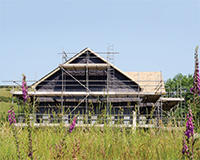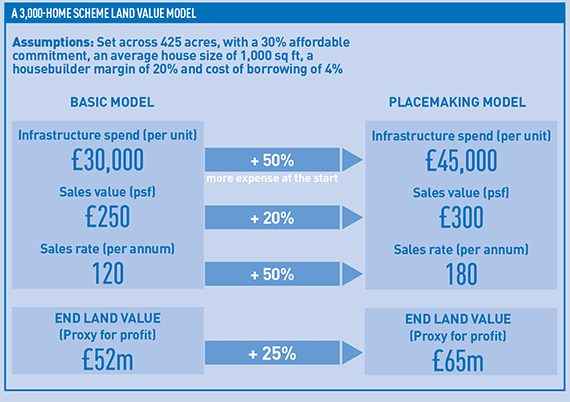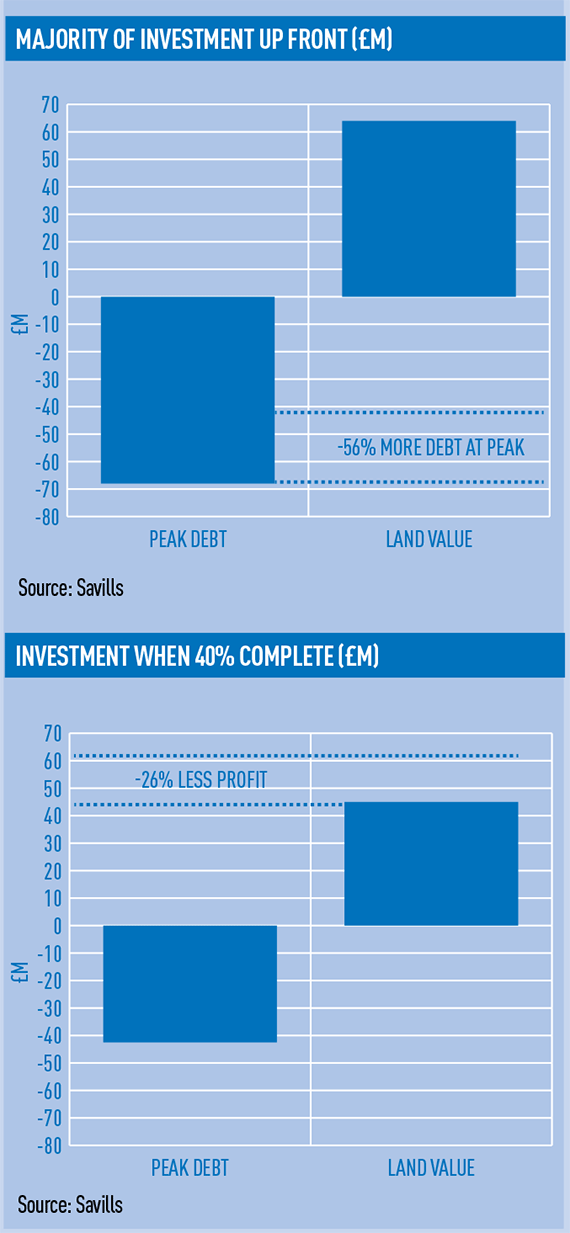A fresh attempt to quantify the value of placemaking shows the difficulties of investing more at the beginning of a development.
Although placemaking adds to the value and investment returns of a housing scheme in the long run, Savills claims that while a scheme’s overall land value – the report’s proxy term for profit – can rise by 25% by the end of a development, the initial outlay on infrastructure can easily be 50% more than the basic model.
This means that debt, which has to be incurred earlier on, can be more than 50% higher throughout the life of a scheme, vastly increasing costs and risk.
The Value of Placemaking report is one of the first attempts to quantify the effects of early additional investment into infrastructure.
Placemaking is generally considered to be any extra spending on a site aside from housing, and includes improvements in infrastructure, such as roads, and the construction of public realm, and amenities such as shops and schools.
Adding in amenities earlier in the process can add to sales rates and the value of the surrounding housing. People will pay more to live in an area with a community and facilities that support their lifestyle. However, the uplift is difficult to quantify, and also increases the cost of investment and therefore the risk of a site.
Savills’ research found that while peak debt would increase by 56%, (see below), sales rates would increase by 50%, and per sq ft sales values would rise by 20%.
Its solution for mitigating the negative effects of the larger capital outlay was to bring forward more schemes through local government and private sector partnerships.
“It [the report] shows that if you invest more, you get more out,” says Susan Emmett, director in Savills residential research team. “It shows, most of all, that it takes more than one player. One developer or housebuilder on its own doing a scheme of this size might find it heavy going. It might find a partnership with a public body, where a landowner is drawing receipts through the phases, more manageable.”
• To send feedback, e-mail alex.peace@estatesgazette.com or tweet @egalexpeace or @estatesgazette
How placemaking affects borrowing
The sooner investment is made in placemaking, the sooner it can be reflected in an uplift in sales value. However, this adds to the amount and cost of debt and interest repayments.
Based upon a hypothetical 3,000-home scheme, (see assumptions, below left) the first graph below shows a 56% increase in debt for a scheme that invests more at the start of construction. It also shows a 25% increase in land value (profit) at the end of development over a scheme in which placemaking investment takes place halfway through construction.













